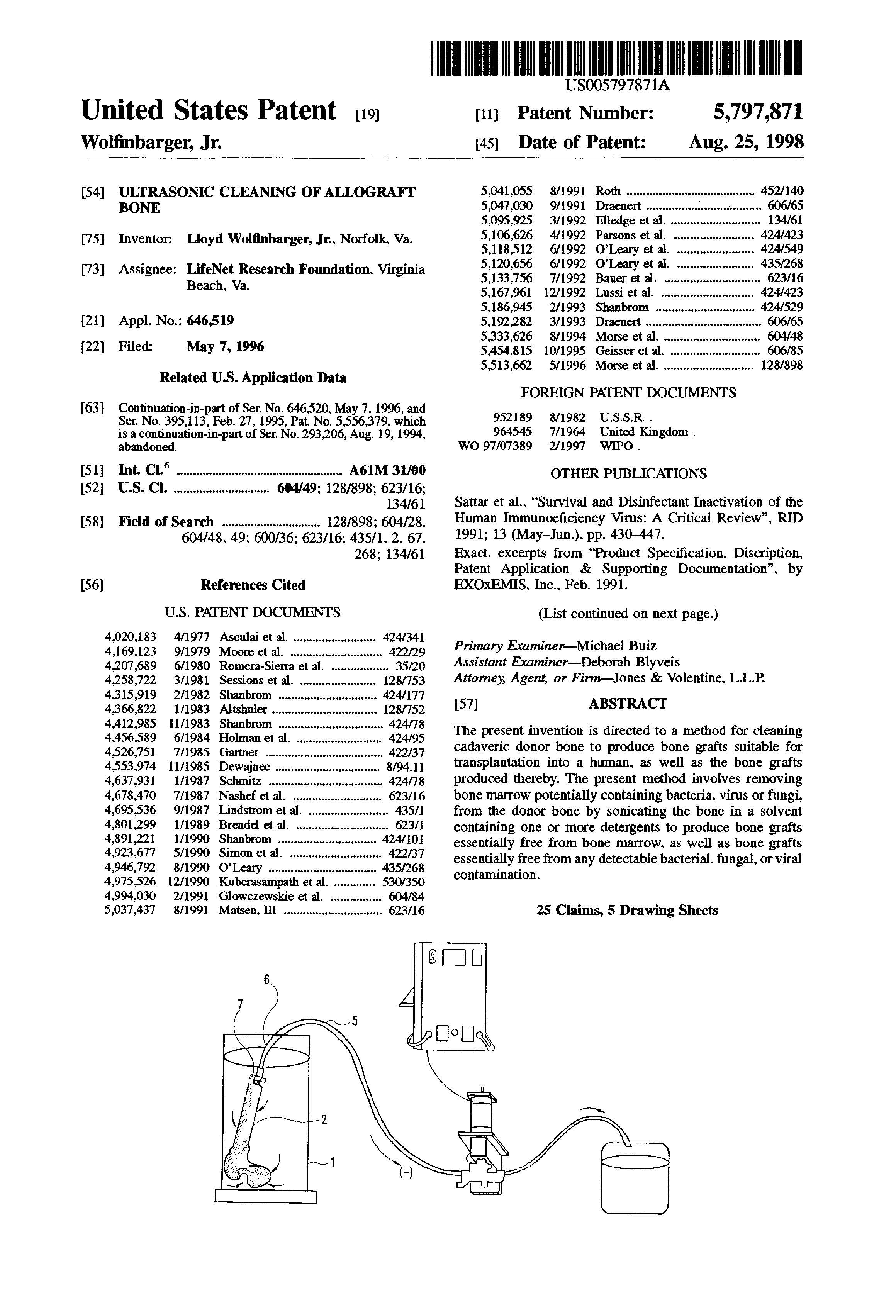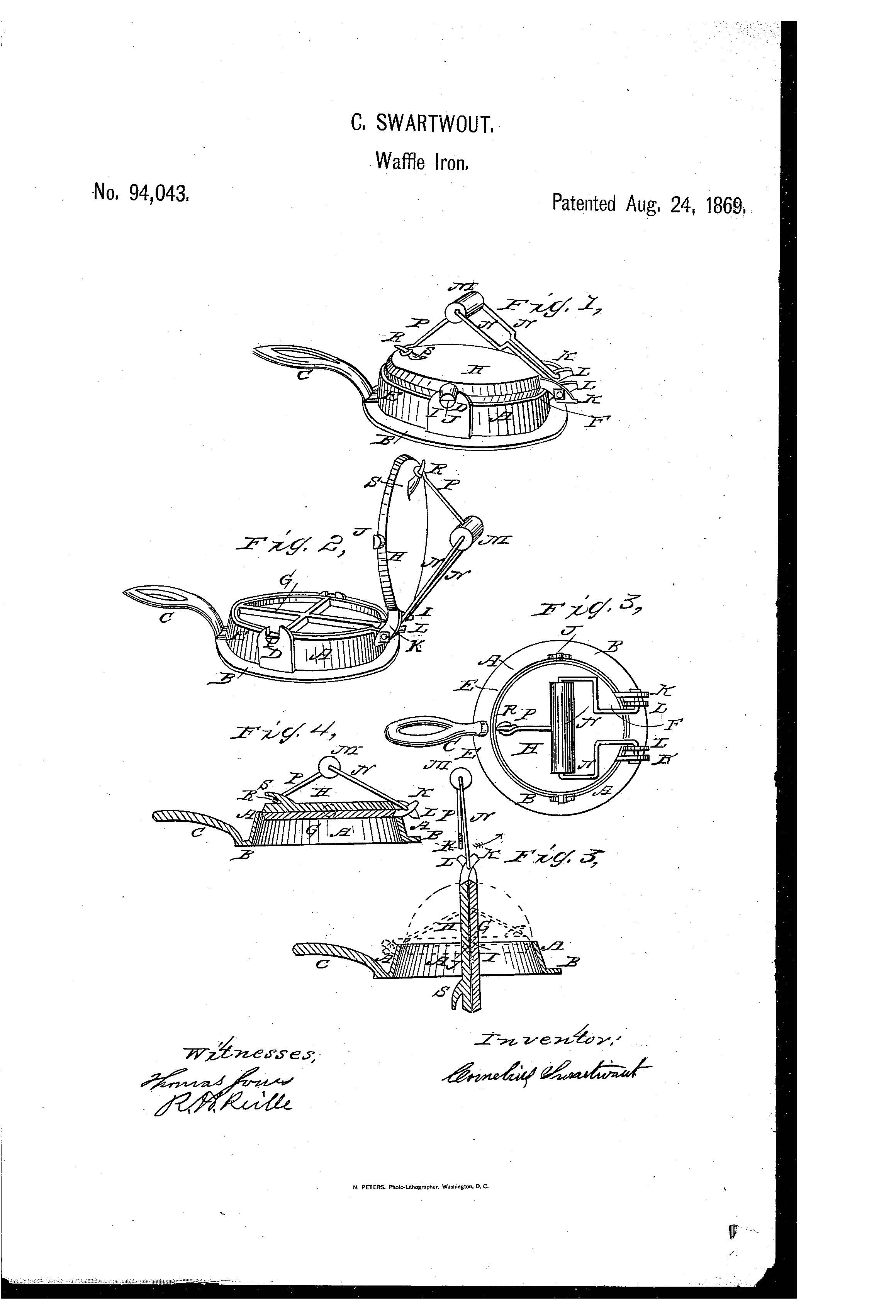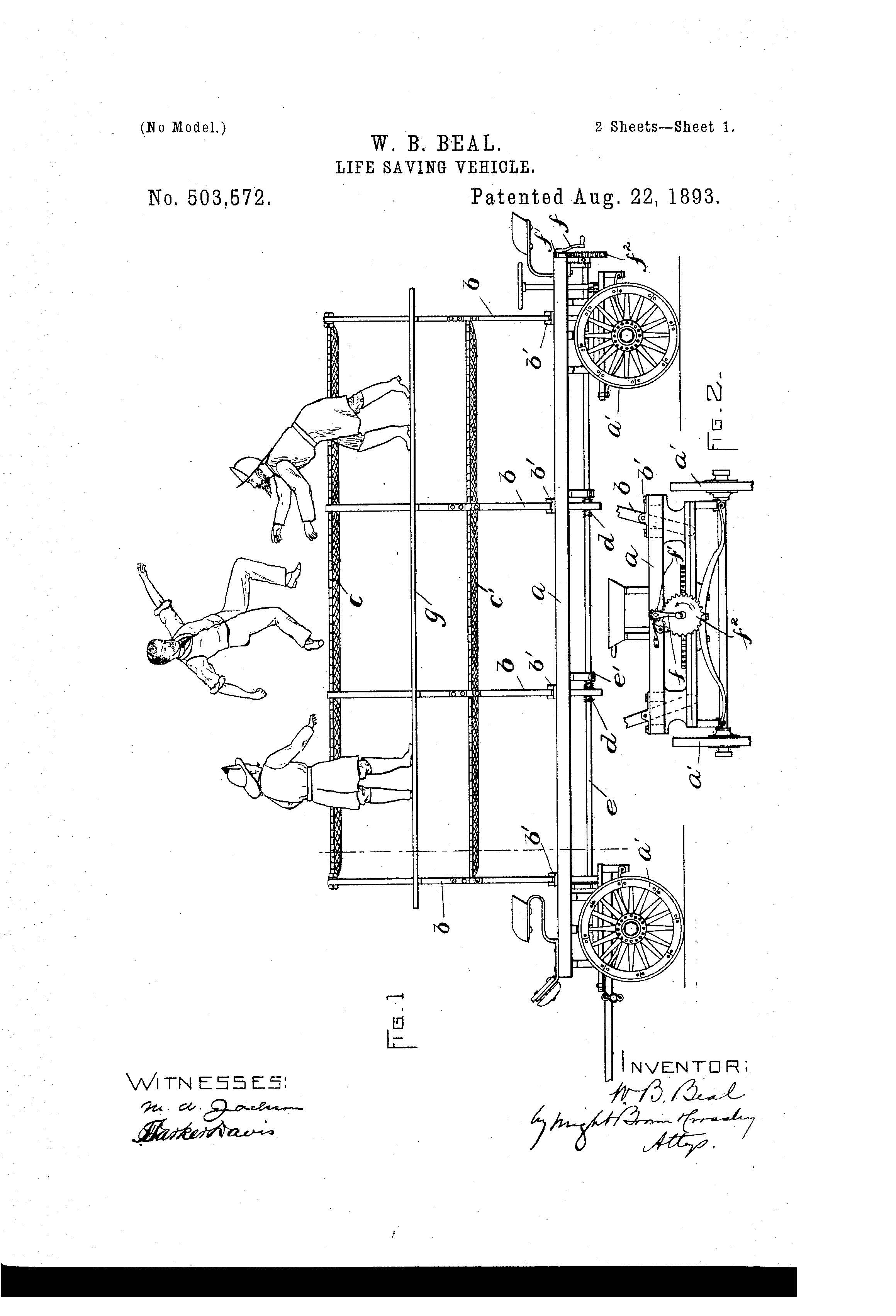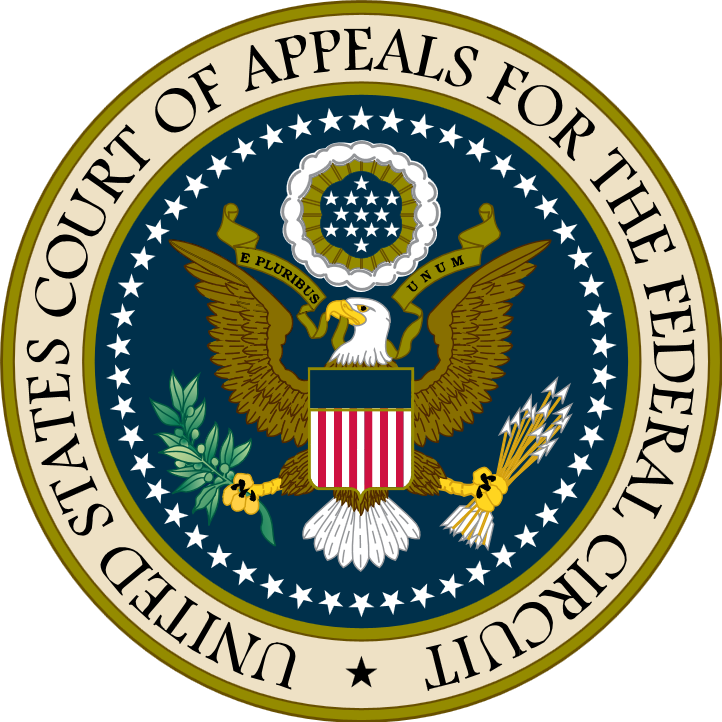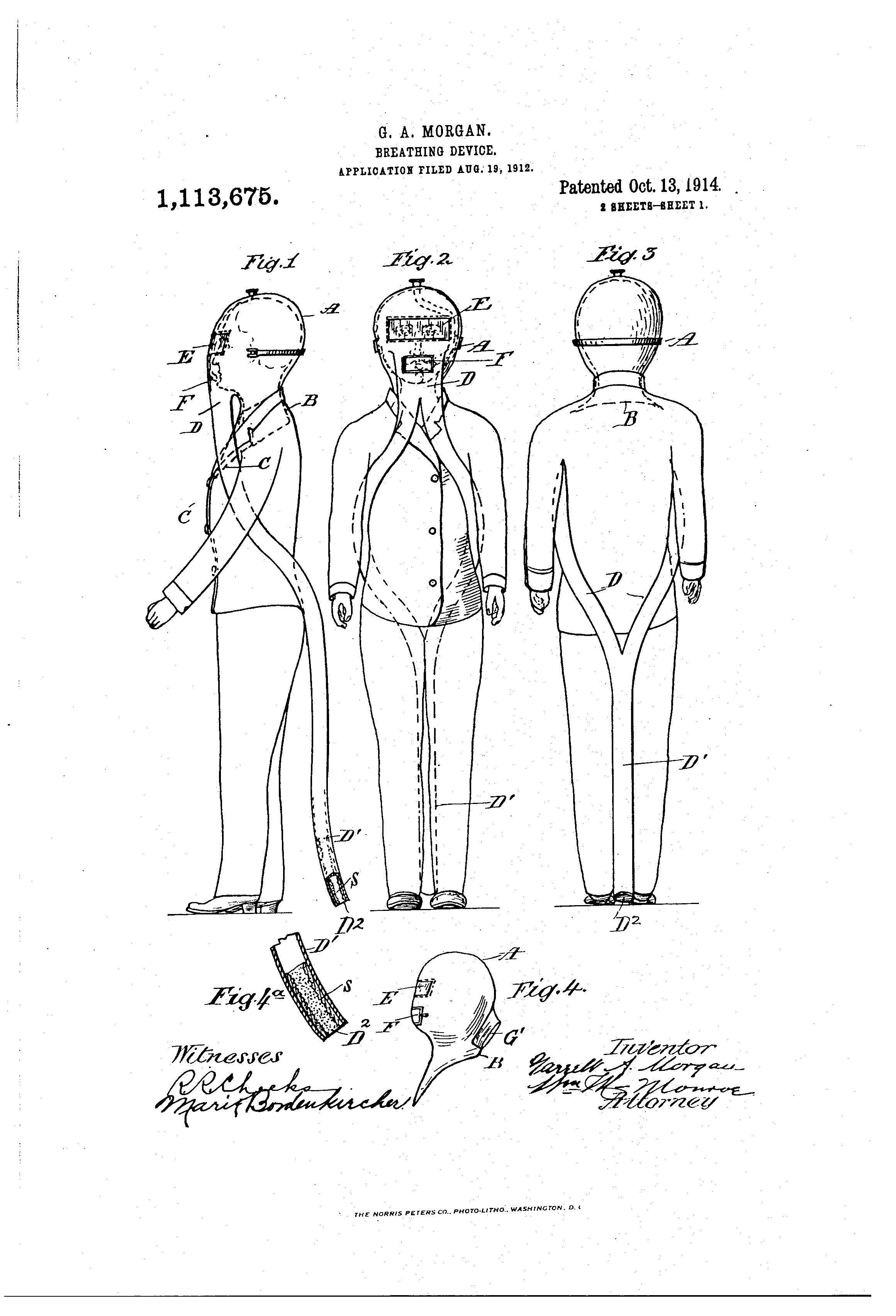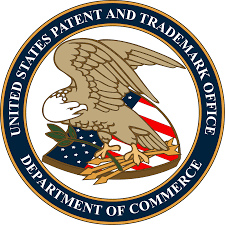Office Hours September 1 at the Omaha Startup Collaborative
Suiter Swantz IP will be holding office hours September 1st at the Omaha Startup Collaborative, located in the Exchange Building in downtown Omaha.
Chad Swantz will be there from 3:00 - 5:00pm. Feel free to send Chad an email (cws@suiter.com) if you’d like to reserve a time slot or have any questions. In addition, meeting times can always be made on an as-needed basis.
Suiter Swantz IP
402-496-0300
www.suiter.com
Investel Targets Snapchat, Inc. in Patent Infringement Suit

Vancouver-based Investel Capital Corporation (Investel) has filed an infringement lawsuit against Snapchat, Inc. with the Federal Court of Canada. Investel alleges that the geofilters used by Snapchat infringe on several claims in the Investel Canadian Patent No. 2,887,596 entitled User Content Sharing System and Method with Automated External Content Integration. The patent is licensed to iFramed Canada Ltd. for exclusive use in North America and was incorporated into the technology of an iFramed application with a planned commercial launch for later this year. iFramed is described as an Internet social medial user/advertiser relationship-based global marketing system.
Snapchat, Inc. is a provider of a text photo and video based messaging application for mobile phones. Established in 2012, the corporate office is located in Venice, California. It was reported that Snapchat has over 100 million active users. In March of 2016, Snapchat acquired the Canadian company Bitstrips Inc, which provides a mobile application that creates personal emojis, which can be shared in a chat application.
According to an Investel Capital Corporation press release on August 24, 2016, Investel, (through its subsidiary, Teliphone Navigata‐Westel Communication Inc.), claims to be “the first to develop and patent an advertising system that allows users to brand their own social media content with user-related advertising and information”. The system provides users with advertising choices for integration into their social media pictures and videos “based on, among other things, geographic locations”.
Investel is asking for unspecified monetary damages for past patent infringement by Snapchat, Inc. and for a permanent injunction to prohibit Snapchat from further infringement of the ‘596 patent.
A managing partner at Investel, Lawry Trevor-Deutsch, was quoted as saying “[w]e will not stand by and permit other companies or organisations, including Snapchat, Inc., to exploit our proprietary technology.” He continued, “[t]his suit reflects our continued commitment to protect our investments by vigorously pursuing the unauthorized and unlicensed use of our intellectual property, whether in Canada or around the world”.
Investel is reviewing other major social media networks that have incorporated geofilters into their platforms for possible infringement of the Investel patents.
Patent of the Day: Ultrasonic Cleaning of Allograft Bone
On this day in 1998 Lloyd Wolfinbarger Jr. was granted the patent for Ultrasonic Cleaning of Allograft Bone. U.S. Patent No. 5,797,871.
The invention is directed to a method for cleaning cadaveric donor bone to produce bone grafts suitable for transplantation into a human, as well as the bone grafts produced thereby. The present method involves removing bone marrow potentially containing bacteria, virus or fungi, from the donor bone by sonicating the bone in a solvent containing one or more detergents to produce bone grafts essentially free from bone marrow, as well as bone grafts essentially free from any detectable bacterial, fungal, or viral contamination.






Patent of the Day: Waffle Iron
On this day in 1969 Cornelius Swartwout was granted the patent for Waffle Iron. U.S. Patent No. 94,043.
The nature of this invention consists of providing a handle, connected with and forming part of a waffle iron, by means of which the same may be readily turned over without danger of slipping, and without the possibility of burning the hand.
It also consists in providing a device, by means of which the upper or covering portion of a waffle iron may be raised, so as to expose the interior, for lifting, or for removing the waffle when done, without danger of the cover slipping back, and without burning the hand.

USPTO Sued After Power Outage Declared a ‘Federal Holiday’

On December 22, 2015, a major power outage occurred at the United States Patent and Trademark Office’s (USPTO) headquarters in Alexandria, Virginia. The outage damaged equipment that caused the failure of its electronic systems and the subsequent shut down of its IT system, which lasted for several days.
With the complete shutdown of the system, Michelle Lee, Director of the USPTO, declared December 22-24 to be a federal holiday within the District of Columbia. The USPTO released the following statement regarding the outage:
In light of this emergency situation, the USPTO will consider each day from Tuesday, December 22, 2015, through Thursday, December 24, 2015, to be a “Federal holiday within the District of Columbia” under 35 U.S.C. § 21 and 37 C.F.R. §§ 1.6, 1.7, 1.9, 2.2(d), 2.195, and 2.196. Any action or fee due on these days will be considered as timely for the purposes of, e.g., 15 U.S.C. §§ 1051(b), 1058, 1059, 1062(b), 1063, 1064, and 1126(d), or 35 U.S.C. §§ 119, 120, 133, and 151, if the action is taken, or the fee paid, on the next succeeding business day on which the USPTO is open (37 C.F.R. §§ 1.7(a) and 2.196). A subsequent notice is anticipated to be issued as needed if the USPTO’s systems are not fully operational by Monday, December 28, 2015.
The patent-holding company, Elm 3DS Innovations, is suing the USPTO and Director Lee because of this declaration. In the lawsuit, filed August 12, 2016, Elm stated the USPTO and Lee acted outside their authority and as a result of the holiday declaration; Elm is facing an unlawful Inter Partes Review (IPR) petition. They are requesting the Eastern District of Virginia declare that December 22-24, 2015 were not federal holidays in the District of Columbia and that Director Lee acted outside her statutory powers in declaring those days as such.
According to the complaint, Elm, which owns numerous patents, had served a complaint on December 24, 2014 to three companies it alleged were infringing Elm’s patents. The deadline to file an IPR by the defendants was December 24, 2015. As a result of the “unlawful” holiday, the defendants were able to the petitions on the next available day, December 28, 2015. The complaint stated “[t]hose IPR petitions would have been considered untimely but for director Lee’s rule that declared that the USPTO would consider December 24, 2015 to be a ‘federal holiday within the District of Columbia’”. The complaint further stated that “Elm has been harmed, and is continuing to be harmed, by the institution of the untimely IPR proceedings under the auspices of director Lee’s rule.”
Elm stated that the “holiday” is inconsistent with the USPTO’s own rule which states “Federal holiday within the District of Colombia” means “any day, except Saturdays and Sundays, when the [USPTO] is officially closed for business for the entire day.” (37 CFR § 1.9(h)).
It should be noted that the USPTO was not closed for business during the aforementioned dates. Employees were expected to attend work and documents could have been filed in-person or through the United States Postal Service, which are both practices that are regularly used today
Neither the USPTO nor Director Lee has the authority to declare any day a federal holiday. Only Congress has the authority to declare a permanent federal holiday. Interestingly, the President does have the authority to grant a “one time” holiday, which was last implemented by George H.W. Bush in recognizing the funeral of former President Ronald Reagan.
Patent of the Day: Grip-Tread for Pneumatic Tires
On this day in 1904, Harry D. Weed was granted the patent for Grip-Tread for Pneumatic Tires (the first tire chain). U.S. Patent No. 768,495.
This invention relates to improvements in treads for pneumatic tires, and is particularly applicable for use on the traction-wheels of automobiles to prevent the tire from slipping on slippery pavements.
The object of this invention is to provide a flexible and collapsing grip or tread composed entirely of chains linked together and applied to the sides and periphery of the tire and held in place solely by the inflation of the tire, and which is reversible so that either side may be applied to the periphery of the tire, this affording a double wearing surface. These grips or auxiliary treads are adapted to be applied to the traction or driving wheels of automobiles, and one of the important objects is to enable any one skilled or unskilled easily and quickly apply the auxiliary tread when needed by partially deflating the tire and then placing the grip thereon, and finally reinflating the tire to cause the transverse chains to partially embed themselves into the periphery of said tire, whereby the auxiliary tread or gripping device is firmly held in operative position against circumferential slipping on the tire.
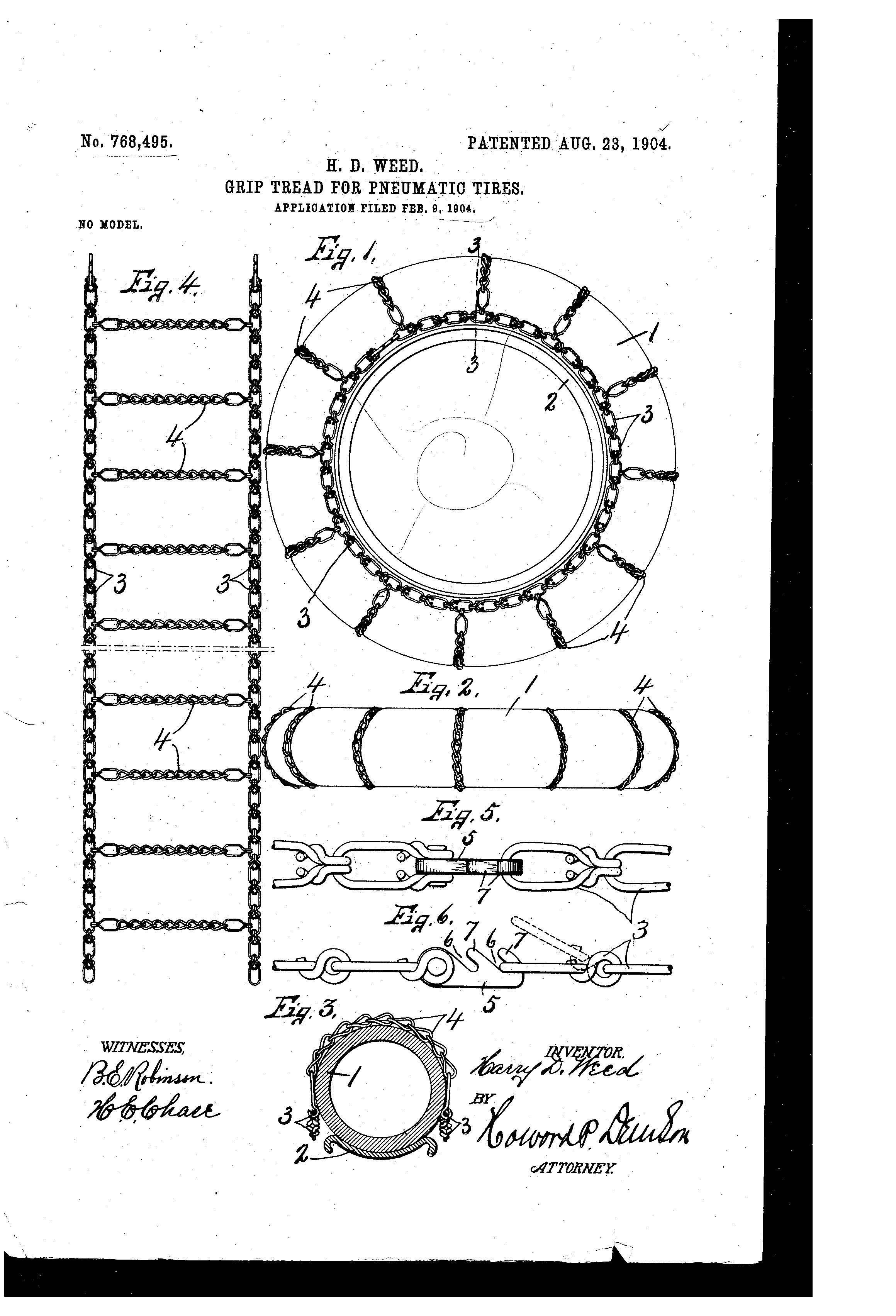
Under Armour Files Trademark Suit Over “Puppy Armour”

On August 1, 2016, Under Armour, the $15 billion company that was ranked fourth on Forbes Most Valuable Sports Brands in 2015, filed a trademark infringement suit in the U.S. District Court for the Southern District of Florida against Miami-based S&O Innovations, LLC, the creators behind Puppy Armour athletic wear for dogs.
According to the complaint, Under Armour alleges it suffered damages to its business as a result of S&O Innovations’ unlawful use of its trademark. Under Armour alleges there will be a likelihood of confusion among consumers, leading them to believe that S&O’s products are manufactured or affiliated with the Under Armour brand. "Not only have defendants misappropriated Under Armour's valuable Armour marks, they have even slavishly copied the very font used," the complaint said.
Silvio Schillen, owner of S&O Innovations, LLC, stated "For almost five years Under Armour wanted our name, and as usual they exhausted our means of defense. We decided to drop the name Puppy Armour, which was a blessing in disguise. It made us rethink our brand."
In 2011, Schillen created the brand Puppy Armour for his dog, noticing the dog’s sensitivity to the changes in temperature. Puppy Armour was marketed as the first athletic clothing line for dogs. He touted the clothing line as "the answer to your dog's prayers," selling short-sleeved T-shirts and tank tops for dogs.
The sports giant first caught wind of Puppy Armour when S&O registered their domain name PuppyArmour.com and when they trademarked “PUPPY ARMOUR”. Under Armour petitioned the United States Patent and Trademark Office (USPTO) and succeeded in canceling Puppy Armour’s registration.
Under Armour has requested a trial by jury and seeks a permanent injunction against Puppy Armour, ordering them to destroy all infringing materials that display Under Armour’s mark. Under Armour also wants Puppy Armour to transfer a number of domain names to Under Armour; award Under Armour $100,000 in statutory damages including trebled damages, punitive damages, and all legal fees; and provide any other relief the courts deem appropriate.
Schillen said Puppy Armour has rebranded the product line and now operate as Puppy Athletic Wear.
Patent of the Day: Life Saving Vehicle
On this day in 1893 Welcome B. Beal was granted the patent for Life Saving Vehicle. U.S. Patent No. 503,572.
This invention relates to certain improvements in life saving vehicles for use of fire departments in catching persons jumping or falling from burning buildings, the object being to provide a vehicle which will receive a falling body without injury to the same, and which will also serve as a ambulance for conveying disabled persons.


Electric Power Group, LLC v. Alstom S.A., Alstom Grid Inc., Psymetrix, LTD,. Alstom Limited
The fight by patent practitioners through the murky waters of patent eligibility for data processing/computing based inventions may have had an additional degree of clarity added with the Federal Circuit’s recent precedential ruling in Electric Power Group, LLC v. Alstom S.A., Alstom Grid Inc., Psymetrix, LTD,. Alstom Limited, 2015-1778. (http://www.cafc.uscourts.gov/sites/default/files/opinions-orders/15-1778.Opinion.7-28-2016.1.PDF).
At issue in the case was the subject matter eligibility of Electric Power Group, LLC’s (EPG) U.S. Patent Nos. 7,233,843, 8,060,259 and 8,401,710 under 35 U.S.C. § 101. In the case, the lower court held that the EPG claims were directed to “the abstract idea of monitoring and analyzing data from disparate sources.” Additional recitations limiting this monitoring and analyzing to the context of electric power grids were insufficient to impart eligibility to the claims.
In its analysis, the Federal Circuit stated that “Information as such is an intangible…Accordingly we have treated collecting information…as within the realm of abstract ideas.” “The advance they purport to make is a process of gathering and analyzing information of a specified content, then displaying the results, and not any particularly assertedly inventive technology for performing those functions.”
Were this the end, little additional insight into the currently state of statutory subject matter analysis could be gleaned from the Federal Circuit’s decision. Fortunately, the Court provided further guidance by contrasting the EPG claims with hypothetical claim constructs which may provide an additional exemplary instance of patent-eligible subject matter.
The Court stated, “[T]he [district] court reasoned, “there is a critical difference between patenting a particular concrete solution to a problem and attempting to patent the abstract idea of a solution to the problem in general. Electric Power Group’s asserted claims, the [district] court observed, do the latter: rather than claiming ‘some specific way of enabling a computer to monitor data from multiple sources across an electric power grid,’ some ‘particular implementation,’ they ‘purport to monopolize every potential solution to the problem’—any way of effectively monitoring multiple sources on a power grid.” (Emphasis added).
It is this focus on some specific “enabling” technology allowing for the performance of data processing that may provide an additional pathway for patent practitioners in crafting claims that may satisfy the subject matter eligibility requirements of 35 U.S.C. § 101. The court may be indicating that claims including recitations which serve to enable processing (e.g. specific data acquisition technology, specific data transfer network configurations, etc.) may be sufficient to impart eligibility.
In EPG’s case, the Court noted that the “most significant additional limitations…are those that limit the claim[s] to monitoring and analyzing data in the context of electric power grids.” However, under the Federal Circuits hypothetical scenario, if the claims were recast to include specific enabling technology unique to that “context of electric power grids”, perhaps the claims could be rendered patent-eligible. As such a context is already at the heart of EPG’s claims, specific enabling technology inherent to that context would not result in a large reduction in patent claim scope.
Patent of the Day: Breathing Device
On this day in 1914 Garrett A. Morgan was granted the patent for Breathing Device. U.S. Patent No. 1,113,675.
The object of the invention are to provide a portable attachment which will enable a fireman to enter a house filled with thick suffocating gases and smoke and breathe freely for some time therein, and thereby enable him to perform his duties of saving life and valuables without danger to himself from suffocation.
The device is also efficient and useful for protection to engineers, chemists, and working men who are obliged to breath noxious fumes or dust derived from the materials in which they are obliged to work.
The invention for its further objects to provide a device which can be quickly and easily attached and carried upon the person without the delay caused by buckling straps or the use of fastening devices of any kind and thus will be serviceable for immediate use in emergencies, since a little delay will often endanger life beyond recovery.


USPTO Publishes Changes in Accelerated Examination Practice

On August 16, 2016, The United Stated Patent and Trademark Office (USPTO) published a notice in the Federal Register regarding changes to the Accelerated Examination Practice. Besides the changes, the USPTO is considering the value of continuing the program.
The USPTO introduced an accelerated examination program in 2006. The program allows a patent application to be examined out of turn if an applicant’s petition to make special is granted under the program. The 2006 AE Notice lists several requirements including a pre-examination search, an accelerated examination support document (AESD), and the application must be complete at the time of filing and it must be filed through EFS-Web.
There are a number reasons a petition to make special can be granted: an inventor is over the age of 65 or has a progressing illness that may prevent assisting in the prosecution in the standard prosecution time; a request to make special is made by a government agency; the patent pertains to an area in the public’s interest such as development of a vaccine for the Zika virus, or the application was indicated as allowable in a foreign jurisdiction and is participating in the Patent Prosecution Highway.
According to the notice, recent changes in examination practice and in the law such as America Invents Act (AIA), Patent Law Treaties Implementation Act (PLTIA) to implement the provisions of the Patent Law Treaty (PLT) and the conversion to the Cooperative Patent Classification system (CPC), have made some requirements and practices of the program no longer applicable. The program is being updated to accommodate these changes.
The USPTO is considering discontinuing the AE program. Since implementing the prioritized examination program (Track I) provided for in the America Invents Act (AIA) in 2011, requests for Accelerated Examination have decreased. The USPTO has less than 200 requests annually for AE. The USPTO plans to publish a request for comments in the Federal Register to garner public input on whether there is value in continuing the AE program considering popularity of the Track I program.
Suiter Swantz IP Named Top Patent Law Firm
Suiter Swantz IP is proud to announce we have been named a “top patent firm” by IPWatchdog. The ranking provided by IPWatchdog is based on the number of patents issued in 2015. Suiter Swantz IP is the #1 patent-issuing law firm in the Nebraska, Iowa and South Dakota area.



